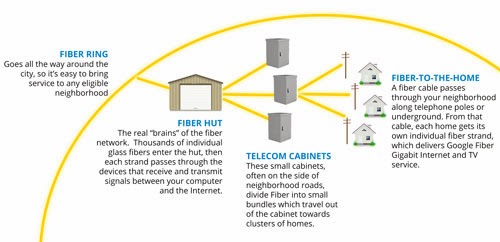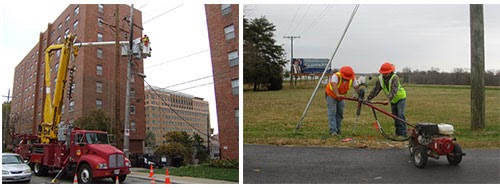Today we’re introducing a “Behind the Scenes” blog series, designed to answer some frequently asked questions about how things work at Google Fiber. Today we’ll hear from Derek Slater, a Government Relations Manager at Google who works with the Fiber team, to explain how we work with local city governments to build a fiber network. - Ed.
When most Americans connect to the Internet from their homes, their signal travels along a local telecommunications infrastructure, currently built mostly of copper cables that run along utility poles or underground. Now that technology has advanced, communities are starting to upgrade to fiber-optic cable that’s better suited to 21st century communications demands, like high-speed Internet. And that involves a lot of detailed planning — utility pole by utility pole and block by block.
That’s what Google Fiber teams are working on right now in the Kansas City area, Austin, and Provo. We’re going to tell you more about the actual construction process in a future blog post, but here we want to focus on how we work closely with city leaders before anyone picks up a shovel or climbs a ladder.
The existing telecommunications infrastructure was installed bit by bit throughout the 20th century — so it’s likely that cities have never experienced the kind of scale and pace of building an entire telecommunications infrastructure all at once. That’s why our first step is to sit down with them to discuss how we can work together quickly and efficiently on such an unusually large project. Some people have suggested that these conversations between Google Fiber and city leaders involve requests for special incentives, exclusive privileges or tax breaks — and that’s simply not true. Instead,
like anyone looking to deploy a new network, our conversations cover some pretty mundane stuff, usually across 3 main topics:
Access to infrastructure - In order to build a network, we need to string fiber along utility poles or install it underground through protective tubes called conduit. It’s not feasible for each and every provider to build their own poles and conduit — after all, there’s only so much space on city streets, and it'd be an ugly waste of resources to force everyone to put up brand new poles alongside existing ones and dig up city streets unnecessarily. So it's essential that cities ensure that new providers can use existing poles and conduit. We work with the city and, where applicable, the local electric utility and telephone company to figure out which poles and conduit we can use for Google Fiber, then we agree on a fair market price we can pay to lease that space.
Access to local infrastructure maps - Once we get permission to lease space on existing poles and in available conduit, we need to know where all of that infrastructure is physically located, so that we can plan where our fiber lines will go. It is critical that the city provide accurate maps about poles and conduit, plus info about existing water, gas, and electricity lines, so that we can know where we can safely build our fiber network.
Expedited construction permits - Google Fiber cities need to be ready for the large volume of permits (thousands!) that we’ll be submitting to them. We comply with each city’s permitting code, and we work closely with cities to figure out a way to expedite the permitting process to make sure that they’re comfortable and ready for the planned pace.
Our work with the city doesn’t end here. We stay in touch with city leaders and work closely with them throughout the entire construction and installation process to make it as quick and painless for residents as possible — a topic which we’ll cover in our next “Fiber Behind the Scenes” blog post.
Posted by Derek Slater, Government Relations Manager

